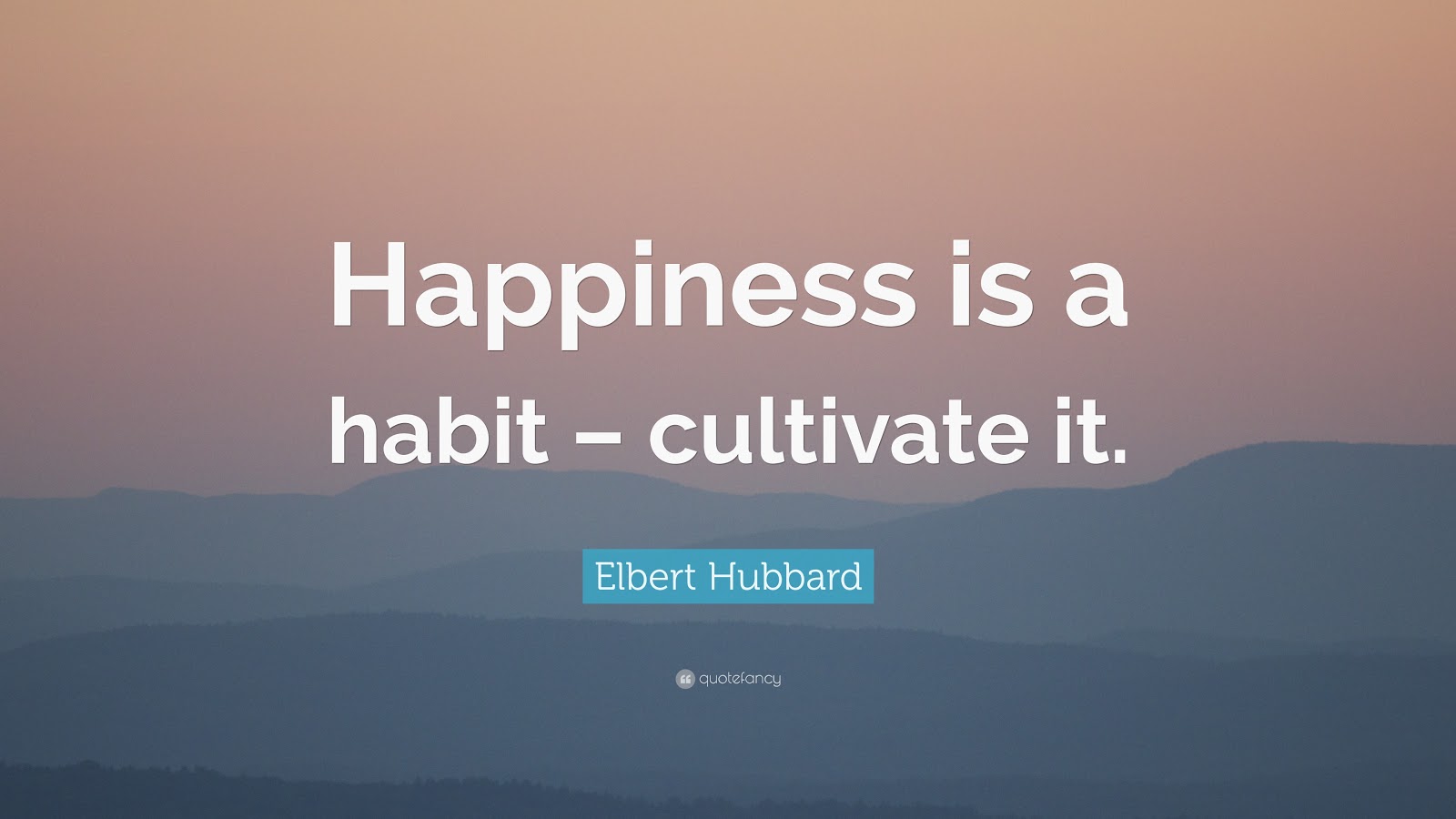The Crucial but Overlooked Role of Happiness Managers
A key piece in developing our employee-centric working culture

“Happy people produce more profit” used to be a squishy, debated claim - an idea that has been slow to penetrate mainstream business thinking, let alone everyday practice. Let’s be honest, it still has a long way to go in being widely accepted, but a growing body of both research and fact-based evidence suggests that employee happiness is a key determinant of long term success.
This post will show you - sprinkled with Infinityn’s own examples - how organizations can create a culture of feeling good, so that your sales organization may flourish. And we’ll also go into what to avoid along the way, and how to avoid becoming a lame “employee-pleaser” and actually get a business return on the “investment in happiness.”
Make no mistake: being intentional about employee engagement and happiness is becoming less and less a “nice to have” attribute in (sales) organizations and more a must-have, a key component of strategy.
The interesting thing is that nearly everyone seems to be on board with the importance of happiness when HR is around, when a boardroom meeting is about anything but hard numbers.
But have you ever noticed that when HR isn’t present in the room, and the topic shifts to targets, KPI’s and problems… then, somehow nobody seems to bring up employee happiness?
As it turns out, a company’s pursuit of happiness, or the wellbeing of employees should be very much present in these discussions as well. Take the case of a then-national company, Burt’s Bees - on the verge of making a leap to quickly penetrate 19 countries.
As you may imagine (and perhaps have experienced first hand) - going global is an exciting but stressful time, requiring nerves and mental stamina. In such scenarios, not many conversations happen around values and employee satisfaction - but not in the case of John Replogle, Burt’s Bees’ CEO. In the midst of the rapid expansion efforts, the CEO kept the nurturing of “positive intelligence” of people in full focus - during a hectic time when he would have had every “excuse” to put it off for later.
The expansion itself went surprisingly well and many years later, managers from the company still attributed the great triumph to the human-centered qualities and measures of the CEO during the crucial period.
So, how does an executive get her arm around “happiness in the workplace”? We’re offering two ways to frame the topic, so as to give meaning and substance to the topic for boards of directors and investors.
This important observation comes from Shawn Achor, author of “The Happiness Advantage.”, a New York Times Bestseller. Elevating happiness from a mere mood to a work ethic has serious implications.
Let’s use a mature definition for happiness - where it’s not just a mood or a state, but the continuous strive for fulfillment and meaning. As such, we believe that it can be, and should be a cornerstone of business culture both on a corporate- and a personal level. This definition shows that “seeking” happiness is an active thing, it’s not something that “happens to” a person - a common perception that is wrong.
The pleasant surprise is that prolonged states of happiness are a result of conscious work; a choice, rather than chance. And if you consider how individuals should be creating happiness, some very important “corporate virtues” are uncovered. These virtues prove why organizations seeking happiness for their employees - and helping employees find it for themselves are getting a return on their investment.
Some proactive ways that individuals and organizations can foster happiness are:
It needs no explanation that the above components of happiness when embraced, will lead to greater productivity and higher quality work. However, without the right people on board, it’s impossible to build a culture where the above three virtues are encoded in the corporate DNA.
In Infinityn’s experience, creating happiness starts at the job interview. When we say we screen our SDR candidates for culture, what we mean is that we’re looking for evidence of the first two virtues in the above list. These should be innate for the candidate, so we’re looking for examples from their past about teamwork, selflessness, and gratitude.
For the third virtue, we’re looking for hunger. Is the candidate genuinely excited about the opportunity? More importantly: do they demonstrate passion and drive when talking about things they have been doing in the past… or did they “just get the job done”? Do you see them stepping into beast mode, devouring targets with joy, and in flow? For a business intelligence candidate, this is a nice to have trait, but for SDR recruits, it has got to be there.
As for all the industry-related knowledge and techniques - those are teachable. Our recruits enter a 2-week, intensive, on-the-job onboarding process called Infinityn Academy, where they are taught and are tested on everything they need to know about interacting with C-level executives in certain industries. But, as emphasized, the human aspect - the right mindset, intelligence, and vibe has to be at least at a 95% level, because these qualities are much harder and slower to develop in people.
Of course, the culture that new hires step into and the various initiatives our happiness manager undertakes on a regular basis further increases the new recruit’s embedding into the company; and sets the stage for happiness and so high performance.
The other perspective on happiness at work is that it is formed by habit. If you think about it, if it’s a work ethic, as suggested above, then it can be learned... and nurtured.

Happiness is formed by habits such as positive thinking, gratitude, moderation, openness and fundamentally: mindfulness. These virtues, just like the ones we discussed above have to be talked about at meetings, some should even be part of written guidelines on communication and culture.
At Infinityn, we don’t want to pretend that we have everything dialed in perfectly. We genuinely believe that a large part of performance comes down to happiness - and therefore we’re always on the lookout for how to make processes and culture better to serve happiness. Because of that, we are updating, finetuning our practice.
There are a few initiatives we've been conscious about that increase SDR-performance and happiness.
One is changing the structure of the weekly meetings. It used to consist of one session, where we discussed the topics of business review (goals, KPIs, operational things) along with peak performance, skill- and happiness-topics; we would intertwine these subjects.
It became evident that this just doesn't work: business review is often a bit stressful, very right-brain oriented requiring intense focus. This mental state differs sharply from what is needed when discussing skills, personal growth and motivation. In the latter, open mindedness, learning, teaching, skill sharing and a good amount of laughing, humor and motivation dominate the scene.
What we did was a clear separation of these two sessions, where we would have a separate meeting for each. We now have a weekly meeting for SDRs at the end of the week with business/operations, then another one on Monday, where we dive into the more relaxing, fun stuff.
Gamification has been a big factor for Infinityn in both learning and performance - and research supports the gamification theory. Gamifying those "dull business things" tends to engage our SDRs, who are typically young, fun-loving, good-spirited millennials and really appreciate having some flavor to the otherwise "not-so-exciting" side of business. There are a few tools that help with this, most notably Kahoot is what we're using to gamify learning and create healthy, fun competition in the team.
Learning should be complemented with a healthy feedback-culture and formal mechanisms in place. The topic of feedback loops in sales teams deserves a post of its own, but here is a resource we used to help you get started.
The next step in gamification for us is expanding it to beyond learning and development. Here is why this is important besides the few factors we've mentioned above. We're looking for applications that fit our technology stack, notably HubSpot.
What to avoid when designing happiness
We don’t believe that happiness is something that you serve on a plate to employees, which they then “consume” and bam, all of a sudden they’re happy and more productive.
Happiness at the workplace is not just about providing free coffee, snacks, bean bags, and high salaries. They’re certainly part of the equation, but just giving perks alone will not create the desired result, if the right cultural aspects or “virtues” discussed earlier are missing.
Another mistake some sales organizations make is “overdoing happiness” and “forcing” the attitude. This almost always happens when executives want to rush the cultural change.
A reliable sign of this mistake is when the whole issue of “passing on the message” feels uneasy and in-genuine for managers. As the quote above advises, happiness (and any endeavour having to do with corporate culture) should be cultivated. Nurtured, grown - so it isn’t going to happen overnight. It’s best to take baby steps, that way the shift will feel natural and everybody will be on board.
Like perks, just installing gamification apps in the CRM without cultural grounding will also not produce the desired results. In summary, fostering happiness across the organization starts with
1. defining and getting everybody on board with the right values or virtues, as we've referred to it in this article. It continues with
2. embedding these values in culture. This includes culture as a whole as well as business processes. Finally,
3. using the right tools - be it technology or perks like free stuff.
The three don't necessarily have to follow one another linearly, but the important thing is to get all three.
In the case of Infinityn’s work, happiness and culture are part of an even greater picture - the SPS3 methodology. This is the framework we use to open doors - and multimillion-dollar opportunities - at enterprise prospects. Studying this methodology will soon make it evident that a super culture with awesome (and happy) employees is vital for a great sales development operation.
This is our lifeblood, passion, and raison d’etre, so we are more than happy to talk about how we build world-class sales development teams for our clients.

A key piece in developing our employee-centric working culture
The world of Marketing and Sales is an exciting and rather hectic one – sometimes unpredictable and sometimes easy to calculate, but no matter what...

Good partnerships don’t usually begin with a grand vision. They start with curiosity, a few conversations, and the sense that both sides are working...

Hello! How is the job hunt going? Are you looking to join a set of growth-minded colleagues and professionals hailing from various countries? If this...

The industrial sector seems to experience major lags regarding digitalization and automation – the latest trend that is currently defining the...

In the dynamic and competitive business environment of today, the adoption of Account-Based Marketing (ABM) represents a strategic shift towards...

How a simple visual can change the game for your organization’s intelligence efforts.
.png)
There’s a point in every company’s growth when the numbers stop adding up. The leads keep coming, but the pipeline stalls. Meetings are booked, yet...
.png)
Infinityn & 6sense: Unlocking the Power of Data-Driven GTM Execution

Filmmakers have romanticized the sales profession time and time again. Cinematic portrayals have deified, humanized, vilified and lionized the...